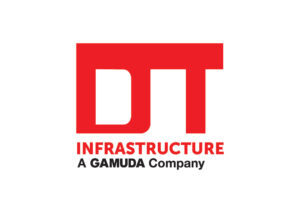In today’s rapidly evolving business landscape, the need for business transformation has become more pressing than ever before. Disruptive technologies, changing consumer preferences, and global economic shifts are constantly challenging the status quo. A business transformation demands a strategic approach to data transformation to enable organisations to extract actionable insights, make informed decisions, and drive growth.
For businesses to thrive, they must adapt and transform. However, the key to successful transformation lies in adopting a pragmatic approach that balances innovation with practicality. In this blog post, we will explore the importance of pragmatism in business transformations and provide insights into how to navigate this complex process effectively.
Understand Your Current State
Before setting sail on your business transformation journey, it’s important to clearly understand your current business state. This is a necessary first step when adopting a pragmatic approach, as it will lay the foundation for designing an effective transformation strategy. To do this, assess what data you’re collecting, where it’s coming from, how it’s stored, and how it’s currently being utilised. Also, identify pain points and bottlenecks in your business workflows.
Define Your Objectives
Every successful transformation journey begins with well-defined objectives. Delve into what you aim to achieve through data transformation. For example, is it to:
- Improve decision-making through better insights?
- Enhance customer experiences?
- Streamline operations?
Defining clear objectives will provide direction and help you measure the success of your efforts. Going forward, metrics should be used when assessing success, growth, and productivity because they show exactly how your business has performed. Setting clear, defined short-term and long-term goals is necessary as well to measure how the business is progressing.
Common Pitfalls in Business Transformation
The reported failure rate of large-scale change programs has hovered around 70 per cent for many years*. Many businesses embark on transformation journeys with lofty ideals and ambitious goals. While these aspirations are admirable, they can often lead to a series of common pitfalls:
- Overreliance on Technology: It’s tempting to believe that adopting the latest technologies will solve all problems. However, technology alone cannot guarantee success. It’s crucial to align technology solutions with specific business objectives.
- Lack of Alignment: When transformation initiatives are not aligned with the company’s core values, mission, and strategy, they can lead to confusion and resistance among employees.
- Scope of Work: Trying to tackle too much at once can overwhelm teams and result in a lack of focus. Transformation efforts should be scoped carefully to ensure meaningful progress.
- Communication: Business transformation is not just about changing processes and systems; it’s also about people and culture. Not being transparent and having clear lines of communication is one of the main pitfalls in business transformation. At companies where senior managers communicate openly and across the organisation about the transformation’s progress, respondents are eight times more likely to report a successful transformation than those who say this communication doesn’t happen*.
A Pragmatic Approach to Business Transformation
A pragmatic approach recognises that transformation is not a one-size-fits-all endeavour. Instead, it involves a thoughtful and adaptable process that considers each organisation’s unique circumstances and goals. Here are some tips for adopting a pragmatic approach to business transformations:
- Planning: Begin by defining a clear and compelling vision for your transformation. This vision should articulate why the transformation is necessary and what success will look like.
- Prioritise Objectives: Identify the most critical objectives that align with your vision. Focus on a handful of key initiatives that will have the most significant impact rather than trying to do everything at once.
- Data-driven decision-making: Base your decisions on data and evidence rather than assumptions. Use metrics to measure progress and adjust your strategy as needed.
- Cultural Considerations: Pay attention to the organisation’s culture. Understand its strengths and weaknesses, and work to align the transformation efforts with the existing culture or make necessary cultural changes gradually.
- Adaptive Strategy: Business environments are dynamic, so be prepared to iterate and adapt your transformation strategy as needed. Flexibility is a hallmark of pragmatism.
- Phased Approach: Break down the transformation into manageable phases, each with its own set of goals and outcomes. This prevents overwhelming the organisation and provides clear milestones for progress.
- Change Management: Implement effective change management strategies to support employees through the transformation process. Communication, training, and support are critical components.
- Monitor and Evaluate: Continuously monitor the transformation’s progress and evaluate its impact on the business. Adjust as necessary to ensure you stay on track.
Set a Realistic Timeline and Budget
Define a clear timeline for your project and allocate a realistic budget. Keep in mind that transformation can be resource-intensive, and unforeseen challenges may arise. Being prepared for potential delays and cost overruns will help you stay on track. Being transparent with your client can also help to keep realistic and pragmatic goals. They can advise on what their budget is and how much they want to allocate to each area of a business transformation.
Design and Implement Solutions
Based on your objectives, design tailored solutions that address your business needs. This might involve creating dashboards for real-time insights, developing predictive models, or implementing data-driven automation. Collaborate closely with your clients to see what their business is missing and formulate solutions based on their needs. In the previous blog post “Getting on top of your Data Migration”, we spoke about keeping things simple, and it is a key point to remember when taking a pragmatic approach to a business transformation.
The Benefits of a Pragmatic Approach
Embracing a pragmatic approach to business transformation offers several benefits:
- Realistic Results: By setting achievable goals and focusing on tangible outcomes, you increase the likelihood of success.
- Enhanced Agility: A pragmatic approach allows your organisation to adapt to changing circumstances and make timely adjustments.
- Sustainable Change: Pragmatic transformations are more likely to result in lasting change that becomes embedded in the organisation’s culture.
- Cost-Efficiency: You can manage costs more effectively by prioritising initiatives and avoiding tackling too much at one time.
What does the End Game look like?
Knowing what your end game looks like should be a well-defined vision constructed at the beginning of a business transformation. It is crucial to always check back with what your end game looks like as you move through your transformation journey. Your end game should be in line with your company’s vision and the expected results should be cost-efficient, realistic, and tangible. This can be easily achieved by utilising a pragmatic approach.
In conclusion, successful business transformation requires a balanced and pragmatic approach. While ambitious goals are essential, a clear vision, thoughtful planning, and adaptability are equally crucial. By taking a pragmatic approach, you can confidently navigate the complex journey of transformation and increase your chances of achieving lasting success in today’s ever-changing business landscape.
If you liked this post, please share it with friends and colleagues!
References
* Bucy, M., Hall, S. and Yakola, D. (2016) Transformation with a capital <em>t</em>, McKinsey & Company. Available at: https://www.mckinsey.com/capabilities/rts/our-insights/transformation-with-a-capital-t (Accessed: 29 August 2023). * Bucy, M. et al. (2021) Losing from day one: Why even successful transformations Fall short, McKinsey & Company. Available at: https://www.mckinsey.com/capabilities/people-and-organizational-performance/our-insights/successful-transformations#/ (Accessed: 29 August 2023).





